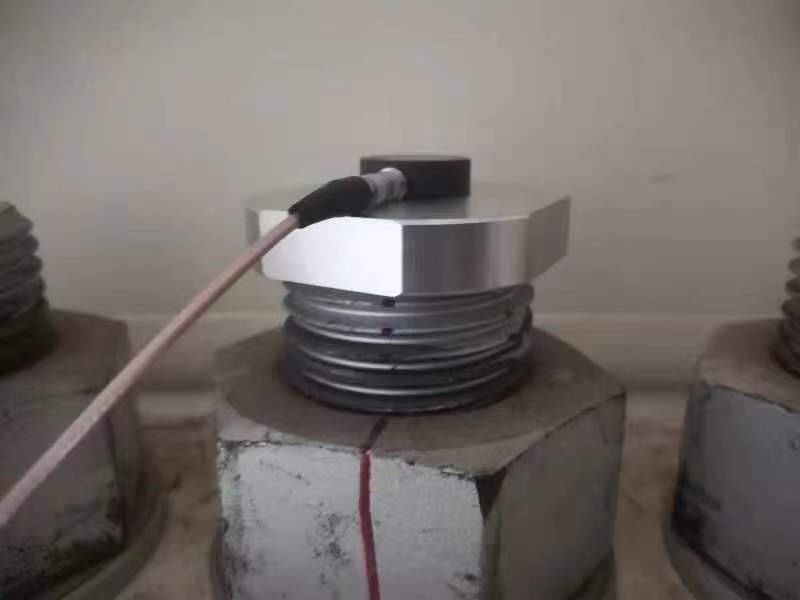Wind turbines are expensive and operate in harsh environments with complex working conditions. During operation, they are subjected to various loads such as vibration, torsion, and shear for a long time, resulting in varying degrees of damage to the components and connecting fasteners between them. Various parts of the bolts, especially the blade root bolts, often experience problems such as reduced bolt tightening or even bolt breakage.If the fault is not detected in a timely manner, it can cause equipment accidents in wind turbines, resulting in huge economic losses, and in serious cases, personal injury accidents can also occur. According to statistics, serious equipment accidents such as tower collapse and blade detachment occur every year due to loose or broken bolts.
The operation site of wind turbines is usually located near the sea and in remote mountainous areas, making on-site maintenance difficult, time-consuming, and even requiring downtime for maintenance, resulting in high maintenance costs.
Therefore, it is particularly important to be able to remotely and in real-time obtain the health status of bolts. With the development of technology, there has been a certain degree of development in online health monitoring of wind power bolts. In the early stage, through trial installation and trial use, the relevant technical routes have been recognized by users. Some newly built wind farms have already made bolt online health monitoring systems a standard configuration.
The online health monitoring technology route for wind power bolts:
Ultrasonic method:
This method is currently the mainstream technology route in the industry and also the most accurate technology for monitoring bolt axial force.
Install an ultrasonic bolt monitoring sensor or probe on one end face of the bolt, transmit and receive ultrasonic signals, and measure the ultrasonic flight time using the principle of ultrasonic reflection on the other end face
.
Ultrasound method

Senther Technology bolt monitoring sensor
The bolt will elongate under axial tension, and the corresponding ultrasonic flight time will increase. In the elastic working area of the bolt, the elongation of the bolt is linearly related to the axial tension of the bolt; At the same time, under different axial stresses, the wave velocity of the ultrasonic signal also changes correspondingly, and the two are also linearly related. Its comprehensive manifestation is a linear relationship between the variation of ultrasonic flight time and the variation of bolt axial force. By calibration, the correlation coefficient between the variation of ultrasonic flight time and the variation of bolt axial force can be obtained.During monitoring, the ultrasonic flight time is measured and subtracted from the initial axial force state of the bolt to obtain the difference in ultrasonic flight time, and the change in bolt axial force is calculated. Calculate the current axial force of the bolt based on its initial axial force. The speed of ultrasonic waves varies with temperature and temperature compensation is necessary.
If the bolt breaks, the ultrasonic signal will return at the location of the fracture. If the measured bolt length does not match the actual length, it can be determined whether the bolt has broken and the location of the fracture.

Senther Technology D401 Ultrasonic Bolt Monitoring Sensor: The D401 (including signal regulator) position measurement system can directly output the distance and change between two parallel surfaces of the metal object being measured. This sensing scheme can simultaneously measure the displacement values of multiple channels (bolts) and output corresponding digital signals through a signal regulator. The signal acquisition is convenient, and the interface is standard and easy to use.This device is particularly suitable for measuring the size and deformation of wind turbine towers and blade bolts. This ultrasonic displacement sensor system provides the most advanced performance, including excellent linear range, accuracy, and temperature compensation solutions. All D401 sensors have good parameter consistency and support interchangeability of probes, expansion cables, and signal regulators, without the need for special matching or calibration of various components.The D401 displacement sensor has good long-term reliability, high sensitivity, strong anti-interference ability, convenient installation, and fast response speed. It is often used for long-term real-time monitoring of bolts, transmission shafts, tracks and other components of large metal structures, in order to analyze the stress situation and failure trend of the structure, and effectively carry out predictive maintenance of equipment.
Features of D401 ultrasonic bolt monitoring sensor:
High resolution signal
Excellent long-term stability
Strong vibration resistance
Compact volume
Lightweight
Wide operating temperature
Reliable packaging
Corrosion resistant design
Application: Large scale bolted steel structures, fan flange bolt monitoring, iron cable tension monitoring, blade flange bolt monitoring, axial force monitoring, expansion difference detection, metal parts inspection


